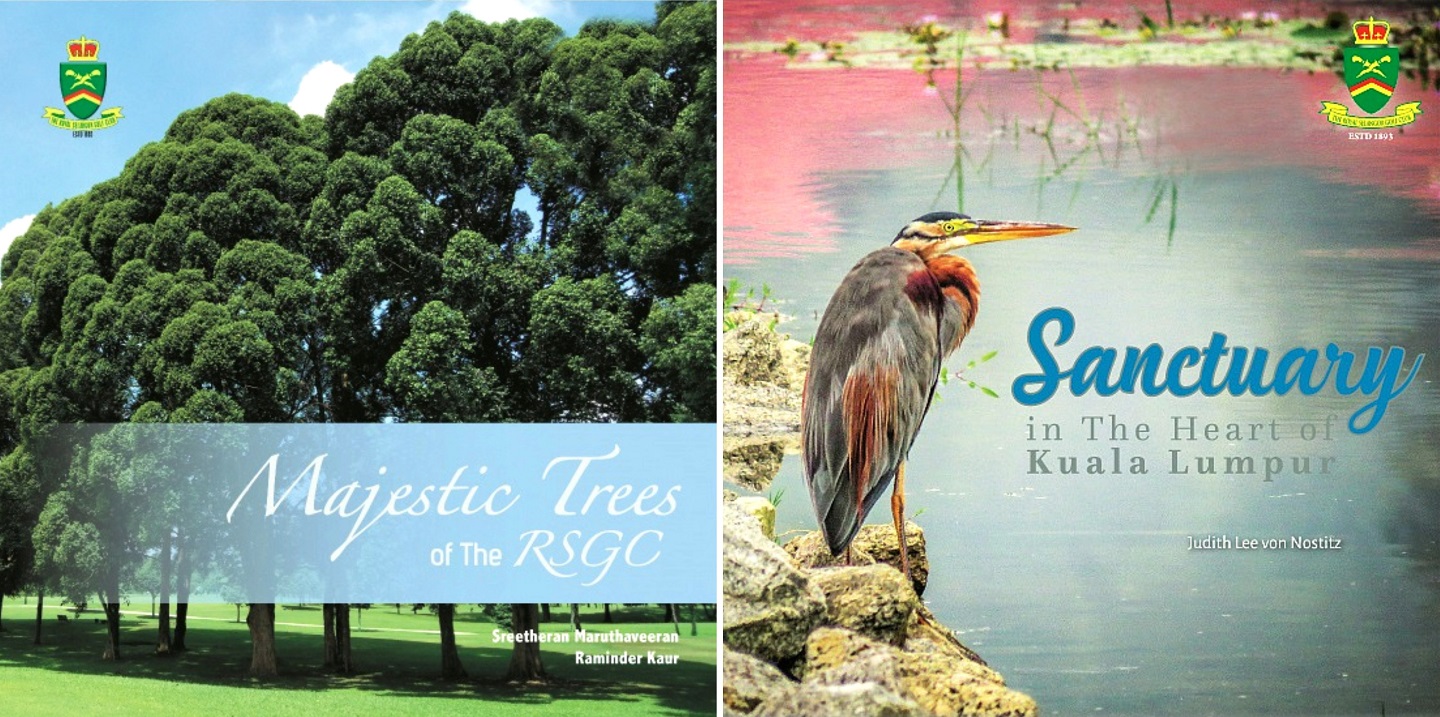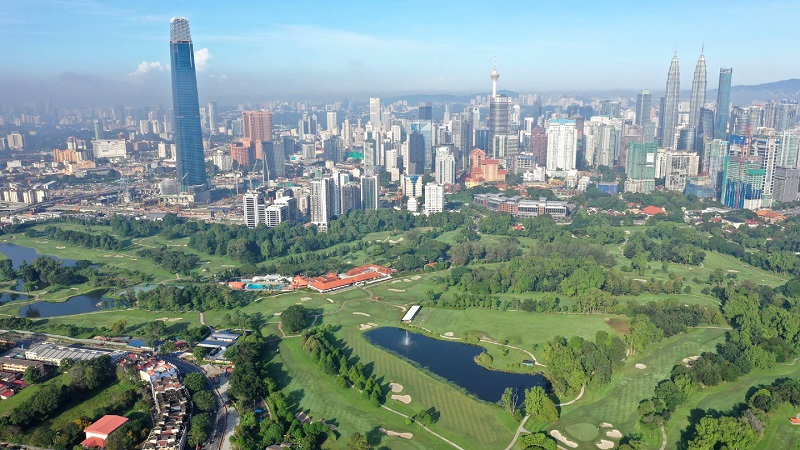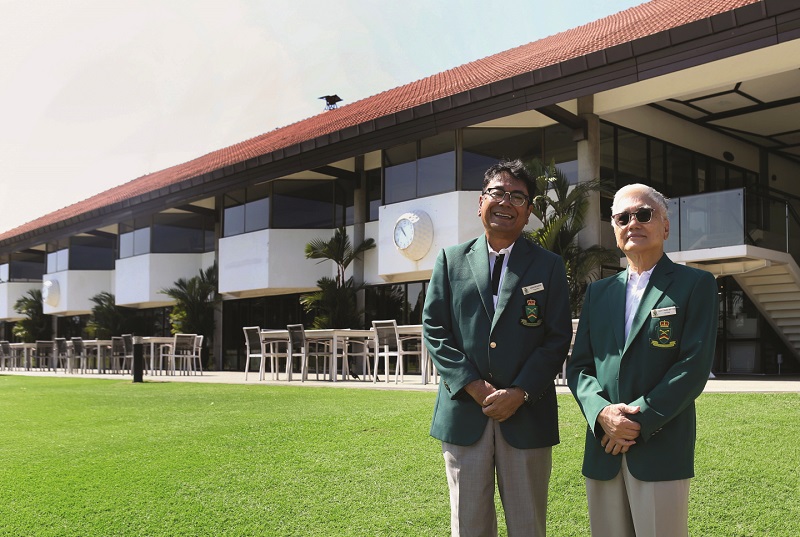
The two coffee-table books are authored by Sreetheran Maruthaveeran and Raminder Kaur, and Judith Lee von Nostitz (Photo: Royal Selangor Golf Club)
It has been 127 years since the first golf club was established in Kuala Lumpur, after two sets of coffee planter brothers, Clem and John Glassford, with Kit and Robert Meikle, first set the ball rolling for its formation by publishing an announcement in the Jan 13, 1893, issue of The Selangor Journal, calling for all interested parties to attend a meeting. It goes without saying that when matters pertain to golf, action is swiftly taken. By June the same year, the Selangor Golf Club (SGC) was born and its first annual general meeting was held.
To give some historical perspective, electricity and waterworks were only brought into service in 1896. Up until then, KL still functioned by the light of oil lamps and was watered by wells. Despite the hardship of the times, the gentlemanly game of golf was already hugely popular in colonial Malaya, with a five-hole course laid out by A R Venning at the Lake Gardens in 1889. The provisional committee of the SGC wisely decided to construct an entirely new course in Petaling Hills rather than take over the existing course as the Lake Gardens had already been earmarked as a public park. Moreover, errant golf balls would have posed a health hazard to those enjoying the park.
The joy at the opening of the Petaling Hills course proved to be short-lived as the state government decided to reclaim the land for another public park. But the club’s committee immediately sprang into action, selecting a new site in what was then Circular Road (now Jalan Tun Razak). Happily, the venue has remained unchanged since, with only one major reconstruction in 2005.
rsgc_c8.jpg

Being the country’s oldest (and Asia’s fourth oldest) golf club, what many Malaysians do not realise is the rich biodiversity within Royal Selangor Golf Club (RSGC)’s grounds. Spanning 348 acres, much of it old tin mining land, there are gardens, waterways and copses of tropical trees — tembusu, mahogany and pulai — all set against the city’s stunning skyline. It was in this light that two coffee-table books — Majestic Trees of the RSGC and Sanctuary in the Heart of Kuala Lumpur — were recently published. Authored by Sreetheran Maruthaveeran, a senior lecturer at Universiti Putra Malaysia and Raminder Kaur, RSGC’s senior horticulturist, and Judith Lee von Nostitz, photojournalist and longtime club member, both books offer great insight into the richness right in our own backyard.
“I have been a member since 1986, 34 years,” says Datuk Chang See Tum, the club’s present captain. “And the club is a haven for golfers as well as nature lovers. Just look at the rain tree opposite the reception area. It is over 100 years old. Both books have already received tremendous response from our members. And why not? It is an excellent way to learn more about what is in and around the course.”
Majestic Trees of the RSGC is a dendrologist’s dream — a detailed and descriptive account of 116 species of trees found on the club grounds. Visitors would barely fail to notice the majestic rain trees that welcome you to the grounds and if you are sharp of eye, you can even spot a stunning rainbow eucalyptus. Even if you are not a member, or just an occasional explorer of popular walking spots such as the Tugu Trail or Bukit Kiara, the tome will greatly enrich any time spent outdoors.
20191212_peo_chang_see_tum_2821_izw1.jpg

Sanctuary in the Heart of Kuala Lumpur focuses on the bird life that can be found in the club’s varied microsystems as well as insects, oriental squirrels, water monitor lizards and long-tailed macaques. There are pages dedicated to the club’s resident raptors, including crested serpent eagles, oriental honey buzzards and the more ubiquitous brahminy kites. My favourite, however, would be the delightful sections dedicated to the everyday characters, birds we would find in our very own gardens, such as the yellow-vented bulbul and the red-eyed Asian glossy starling, a feature in most towering trees, particularly the lipstick palm.
“We plant 200 saplings a year as part of our tree replanting programme,” Chang says. “The Forest Research Institute Malaysia has been assisting us for the last 10 to 15 years to okay the sites and species as well as arrange for an arborist to perform an annual inspection of our trees. Yes, the grounds are private but we want to ensure things are done well and properly. A lot of our members love nature.”
Beyond golf, nature walks also form part of the club’s activities on the course. Collaborating with the Malaysian Nature Society, Chang says, “it is a chance for city children to see up close what a frog is. Last year, we organised a morning session just on trees and two night walks as well, with a full house for each event. We hope to offer one every quarter from this year onwards”.
It is also interesting to note that the club does not offer night golfing, which it says is necessary in order to allow the greens to rest. “No floodlights,” says Ezani Abu Bakar, who handles communication, PR and events for RSGC. “We also work with Perhilitan (the Department of Wildlife and National Parks Peninsular Malaysia, which is responsible for the protection, management and preservation of wildlife and national parks in Peninsular Malaysia) and I am pleased to say we have a budget to feed the monkeys too. They can be naughty though, as they love picking balls from the fairway when games are in progress.”
For enquiries about both titles, contact The Royal Selangor Golf Club at 03 9206 3247.
This article first appeared on Feb 3, 2020 in The Edge Malaysia.


